CAA News Today
CAA 2017 Annual Conference Keynote, Distinguished Scholar, and Artist Interviews
posted by CAA — November 28, 2016
CAA is excited to present talks by the following special guests at the 105th Annual Conference, taking place February 15–18, 2017, in New York.
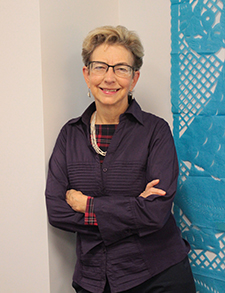 Keynote Speaker
Keynote Speaker
This year Mary Miller, a scholar of art of the ancient New World, Sterling Professor of History of Art, and senior director of the Institute for the Preservation of Cultural Heritage at Yale University, will deliver the keynote address during Convocation.
This special event, to be held on the first evening of the Annual Conference, includes a welcome from Suzanne Preston Blier, CAA president, and Hunter O’Hanian, CAA executive director, as well as the presentation of annual Awards for Distinction.
Convocation is free and open to the public.

Distinguished Artist Interviews
Organized by CAA’s Services to Artists Committee, the Distinguished Artist Interviews feature esteemed artists who discuss their work with a respected colleague. The interviews are held as part of ARTspace, a program partially funded by a generous grant from the National Endowment for the Arts.
First, the artist and activist Coco Fusco will be in conversation with the art historian Steven Nelson of the University of California, Los Angeles. Next, the painter Katherine Bradford will speak with a fellow artist, Judith Bernstein.
The Distinguished Artist Interviews are free and open to the public.
 Distinguished Scholar
Distinguished Scholar
Kaja Silverman, a historian of art and film, critical theorist, and Katherine and Keith L. Sachs Professor of Art History at the University of Pennsylvania, will be recognized as CAA’s Distinguished Scholar for 2017 in this special session.
In addition to remarks from Silverman, the panel will feature talks from Richard Meyer, Robert and Ruth Halperin Professor in Art History at Stanford University, and Homay King, Professor of History of Art at Bryn Mawr College.
Please join the speakers for a reception immediately following the session in the Third Floor East Promenade. A cash bar will be available.
Conference registration is required to attend the Distinguished Scholar Session.
Staff Interview: Doreen Davis
posted by CAA — November 21, 2016
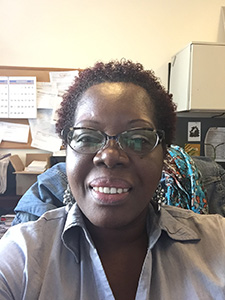 In our first staff interview, we spoke with Paul Skiff, assistant director for Annual Conference. Continuing in the staff interview series, we spoke with Doreen Davis, who currently holds the record for longest-serving CAA staff member.
In our first staff interview, we spoke with Paul Skiff, assistant director for Annual Conference. Continuing in the staff interview series, we spoke with Doreen Davis, who currently holds the record for longest-serving CAA staff member.
How long have you worked at CAA?
Twenty-six years.
What do you do at CAA?
I am the manager of member services.
What does CAA mean to you?
CAA has many meanings, but the greatest meaning to me is that it represents the opportunity for me to grow, for me to share what I have learned, for me to plant the seed of possibilities and leave behind a bigger, better organization than the one I first started working for. CAA will always be the organization that challenged me to be better and to have the flexibility to make our members feel that we are not just an organization. We are their partner for as long as they are members, whether active or lapsed.
Can you talk about one of your favorite member moments?
One member was very dissatisfied on several occasions and continued to be very mean on the phone. Even after I resolved her membership issues, she did not say “thank you” but instead hung up. The conference was approaching, and I am usually stationed at the “Problem Information Booth.” I hoped and prayed that I would not see her at the conference, because she would definitely come to that booth. Well, I was not so lucky. She showed up and, after reading my badge, said, “Hi Ms. Davis, I am so and so. I want to apologize for my behavior—it was so unlike me. I was going through a rough period, but thank you for your patience and your help.” I responded, “You are very welcome, and enjoy the conference.” Whew!
What do you like best about the arts and working in the arts?
I love that art can transcend time, and if art is good it will last forever. I also love that we can have an unlimited number of interpretations of art. Everyone sees or hears roughly the same thing, but each of us has our own opinion of it. Our experiences in life help shape our opinions of art. No two people experience the exact same thing, so our interpretations are bound to vary. I love working for the arts because I see how my efforts positively affect people in need. Nonprofits are a great place to maximize your mental talents along with your compassion.
Do you have a favorite moment from the Annual Conference each year?
One of my favorite moments was encountering a job seeker who had an interview, but because she was not a current member she was not allowed in the Interview Hall to meet with the employer. I gave her an individual-membership brochure with an application and walked her into the hall. She took it and thanked me. I said to myself, maybe she will join. She came back later and informed me that the interview went well. I said, “Congrats!” I forgot all about her until a few months later, when she sent me an email telling me she had been hired. Because of that, she took out a membership!
Staff Interview: Paul Skiff
posted by CAA — October 27, 2016
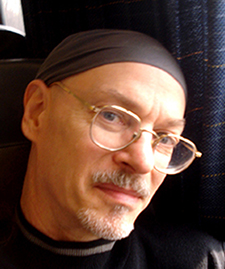 Paul Skiff
Paul SkiffAs part of the new myCAA campaign where we ask our members to share with us what CAA means to them, we thought it also makes sense to share with our members more about ourselves at CAA. In this spirit, every few weeks we will post an interview with a staff member at CAA. We want our members to know who we are also.
Our first interview in the series is with Paul Skiff, assistant director for Annual Conference.
How long have you worked at CAA?
Seventeen years.
What do you do at CAA?
I handle all space use for the Annual Conference: facility specification and coordinating with facility personnel, logistics, service providers, production, marketing, and sponsorships for the Book and Trade Fair, receptions, tours, onsite direction, and the task of working up budgets for all of this. Essentially I set up the arrangements that enable us at CAA to coordinate everyone and everything into and out of the conference.
What does CAA mean to you?
CAA is a leading international organization promoting visual art and culture in a way that has direct impact on society. The conference brings together the membership, along with related professions, for a large public event that gives a high profile to the cultural sector of the host city and contributes to defining the forward direction of culture in general.
Can you talk about one of your favorite member moments?
Too many to mention, really. CAA members are so frequently a great pleasure to work with no matter what the situation. At its base the organization is a collective, and that really guides so much of what members bring.
What do you like best about the arts and working in the arts?
Art, and culture in general, provides a basis for unity across social, cultural, national, and political boundaries. In the urban culture of the United States, cultural practice is seen as an open forum with authority to comment upon—and provide a way for coping with—the prevailing conditions of the time. Applied this way, cultural practices have as their main goal establishment of a democratizing equality. What I like about one part of the particular work I do in the arts with CAA is that my efforts serve to create opportunities for thousands of people involved in art and culture. Over my time working with CAA, this has amounted to providing a wide variety of opportunities for literally tens of thousands of people involved with art and culture.
Do you have a favorite moment from the Annual Conference each year?
The closing celebration for department staff after sessions conclude on the last day of the conference, when a year’s worth of hard work is complete and you know thousands of people had a pleasurable and fulfilling experience.
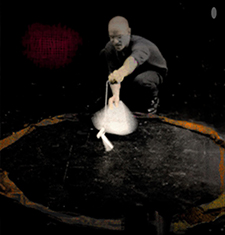 Video capture of Paul Skiff’s performance Blood Circle
Video capture of Paul Skiff’s performance Blood CircleWhat have your most recent performances consisted of?
My most recent performances have been straightforward presentations of texts and poetry spoken live, often with supplemental sound, and mostly presented for community-based cultural organizations with a vision for preserving, promoting, and strengthening local culture.
How do you feel about the differences between your art performed live or recorded on tape?
My live performance often incorporates recorded sound and images, so it is not that easy to separate the two modes of presentation. But to consider electronically recorded material separately, there is of course a vast difference with regard to the resultant sensory phenomenon. The main strength of actual live, spoken work is its generative quality, its immediacy, and its ability to create a “hearership” that can challenge existing listening institutions. With electronically recorded sound and/or images you have the rather endlessly deep toolbox of technology, which mostly amounts to applying exaggeration and distortion to live forms, and playing with time, as well as simply preserving information for transmission. I’m not saying anything profound by that, of course. Applying technology to a live performance enables an extension and transformation of form that allows for many different and new ways to present the work, seek a broader audience, and invent ever more creative solutions.
The creation of electronic information along with storage and retrieval is the most expansive creative environment for us now. At this point in our history telelectricentrism is second nature. Humanity has adapted to this so that forms of experience based on electronic image and sound increasingly dominate everyday life. We are still discovering how this is an asset and liability. It has mixed results and risky implications for our ability to really communicate. But in this for me is a great and absorbing task of applying these distorting and exaggerating technologies to instill acts of rehumanizing our culture. It’s kind of like taking something inherently dangerous and reshaping or repurposing it to provide pleasure, fulfillment, and a greater sense of shared well-being—not to mention preserving and strengthening our sense of self-worth.
A Radical Change: An Interview with Irving Sandler
posted by Christopher Howard — July 29, 2016
The art critic and historian Irving Sandler was a regular contributor to ARTnews and other magazines in the 1950s and 1960s. He is best known for The Triumph of American Painting: A History of Abstract Expressionism (London: Pall Mall, 1970) and its follow-up, The New York School: The Painters and Sculptors of the Fifties (New York: Harper and Row, 1978). Born in New York in 1925, Sandler turned 91 years old on July 22.
He and his wife, Lucy Freedman Sandler, a historian of medieval art and an accomplished author in her own right, are CAA life members. Both scholars have a long involvement with CAA spanning several decades: Lucy served as president of the Board of Directors from 1981 to 1984 and organized the 1978 Annual Conference with her husband. Both have spoken many times at the conference; they have organized and moderated numerous panels and sessions as well. In addition, Irving was part of a group of CAA members who introduced a new format to Art Journal, back in 1979.
Sandler’s second book of memoirs, Swept Up by Art (Brooklyn: Rail Editions, 2015), follows his first, A Sweeper-Up after Artists (New York: Thames and Hudson, 2003). Christopher Howard, CAA managing editor, visited Sandler in May 2016 at his New York apartment to talk about his recent book and about his involvement with CAA over the years.
CAA: Let’s start with Art Journal. In the late 1970s you and a handful of others—Anne Coffin Hansen, Ellen Lanyon, George Sadek—got together to reinvent the publication.
Irving Sandler: That is pretty much it. We took the journal, which had become pretty moribund—it was sort of run by an old guard—and we turned it into something much more interesting by doing thematic issues, and also getting interesting editors to do it. It’s still working more or less that way.
Yes, it is. Editors have three-year terms—but they get a longer time span to take it over. You even produced one of those early issues, in Winter 1980, yourself.
Yes, I did. This issue was, to my knowledge, was the first issue on modernism and postmodernism, indicating the change that had been taking place in art, and in the art world as well. That was a very good issue.
You and your wife first joined CAA in 1954. How has the teaching of art and art history changed over the last sixty years?
Well, one of the things—the primary thing I believe—that’s changed would be the introduction of contemporary art into curricula. That simply wasn’t done. In places like the Institute of Fine Arts, you couldn’t write a dissertation on an artist who wasn’t dead for a century. And suddenly, not only do you have contemporary art, but the primary emphasis, in our art-history programs now, is on the contemporary. That’s a radical change to the entire approach to art.
Former CAA President Marvin Eisenberg Dies
posted by CAA — June 06, 2016
 Marvin Eisenberg, professor of history of art at the University of Michigan in Ann Arbor and president of the CAA Board of Directors from 1968 to 1970, died on May 18, 2016. He was 93 years old.
Marvin Eisenberg, professor of history of art at the University of Michigan in Ann Arbor and president of the CAA Board of Directors from 1968 to 1970, died on May 18, 2016. He was 93 years old.
In 1943 Eisenberg earned a BA from the University of Pennsylvania in Philadelphia, after serving in the Army Signal Corps during World War II. Upon earning both an MFA and PhD from Princeton University in Princeton, New Jersey, he began teaching at Michigan, where he worked for his entire career. Eisenberg won CAA’s Distinguished Teaching of Art History Award in 1987. He retired in 1989.
Read more about Eisenberg’s life and career on the website of the University of Michigan’s College of Literature, Science, and the Arts.
2016–2017 Nominating Committee Members
posted by CAA — May 31, 2016
CAA is pleased to announce the members of the 2016–2017 Nominating Committee, which is charged with identifying and interviewing potential candidates for the Board of Directors and selecting the final slate of candidates for the membership’s vote. The committee members, their institutional affiliations, and their positions are:
- Jim Hopfensperger, Vice President for Committees and Nominating Committee Chair, Professor, Frostic School of Art, Western Michigan University
- Jesús Escobar, Harold H. and Virginia Anderson Chair, Department of Art History, Northwestern University
- Helen C. Frederick, Professor, School of Art and Design, George Mason University
- Carmenita D. Higginbotham, Associate Professor, Program in American Studies, University of Virginia, Department of Art
- Thomas Lawson, Dean, School of Art, Jill and Peter Kraus Distinguished Chair in Art, California Institute of the Arts
- Sarah A. Lichtman, Assistant Professor, Director, Design-Curatorial Studies, Parsons School of Design
- Gunalan Nadarajan, Professor and Dean, Stamps School of Art and Design, University of Michigan
- David C. Terry, Director of Programs, Curator, New York Foundation for the Arts
Hunter O’Hanian, CAA’s incoming executive director and CEO, will also serve on the Nominating Committee as an ex-officio member.
CAA publishes a call for nominations and self-nominations for Nominating Committee service on the website in late fall of every year and publicizes it in CAA News and via social media. Please direct all queries regarding the committee to Vanessa Jalet, CAA executive liaison.
College Art Association Announces Hunter O’Hanian as Executive Director
posted by CAA — May 18, 2016
 The College Art Association (CAA) is pleased to announce Hunter O’Hanian as its next executive director. He will start at CAA on July 1, 2016. O’Hanian succeeds Linda Downs, who served as CAA executive director from 2006 to 2016. O’Hanian comes to CAA at a moment of expansion and opportunity in the organization. In January 2016, CAA announced comprehensive changes to its Annual Conference that will increase the number of sessions and chances for participation. In response to the changes, CAA received over 850 session proposals for its 2017 conference in New York, February 15–18.
The College Art Association (CAA) is pleased to announce Hunter O’Hanian as its next executive director. He will start at CAA on July 1, 2016. O’Hanian succeeds Linda Downs, who served as CAA executive director from 2006 to 2016. O’Hanian comes to CAA at a moment of expansion and opportunity in the organization. In January 2016, CAA announced comprehensive changes to its Annual Conference that will increase the number of sessions and chances for participation. In response to the changes, CAA received over 850 session proposals for its 2017 conference in New York, February 15–18.
“I am very excited to welcome Hunter O’Hanian to CAA as executive director,” says Suzanne Preston Blier, president of CAA. “He brings not only unique administrative experience but also striking energy and vision at this key moment in the Association’s history.”
As executive director, O’Hanian is an employee of the CAA Board of Directors and serves as the Association’s chief executive officer. In this role, he will work with board members, committees, and task forces to develop the Association’s strategic plans. O’Hanian’s experience in fundraising, law, and the arts will greatly benefit the membership and the larger visual arts, design, education, and cultural communities with whom CAA works. O’Hanian will oversee a wide variety of initiatives, including the CAA Annual Conference, an advocacy program, member services activities, the career center, fellowships, grants and opportunities offered by CAA, and the publications program, which includes The Art Bulletin, Art Journal, Art Journal Open, and caa.reviews.
“I have long been an admirer of the work CAA has done. They have helped so many artists, art historians, and curators in the pursuit of their professional goals,” says O’Hanian. “I am pleased to be part of this exciting team and look forward to playing a role in growing its membership, bolstering the conferences, and helping the organization thrive on every level.”
O’Hanian is currently the director of the Leslie-Lohman Museum of Gay and Lesbian Art in New York’s Soho neighborhood. The Leslie-Lohman Museum is the only art museum devoted exclusively to artwork that speaks to the LGBTQ experience.
Prior to joining Leslie-Lohman, Hunter was the vice president of institutional advancement and executive director of the Foundation for Massachusetts College of Art and Design in Boston. Previous to that, he led two renowned artists’ residencies programs, having served as the president of Anderson Ranch Arts Center in Snowmass Village, outside of Aspen, Colorado, and executive director of the Fine Arts Work Center in Provincetown, Massachusetts, which is the largest residency program for emerging artists and writers in the United States. The Fine Arts Work Center recently permanently endowed a fellowship in his name.
O’Hanian has a long career of non-profit board and community involvement. He is the past board chair of the Alliance of Artists Communities, the national membership organization for artists’ residency programs. He studied painting at Boston College and received his bachelor of laws degree from Suffolk University in Boston. O’Hanian has an honorary doctorate of fine arts from the Art Institute of Boston.
Photo credit: Johnathan M. Lewis
New Members to the CAA Board
posted by CAA — May 04, 2016
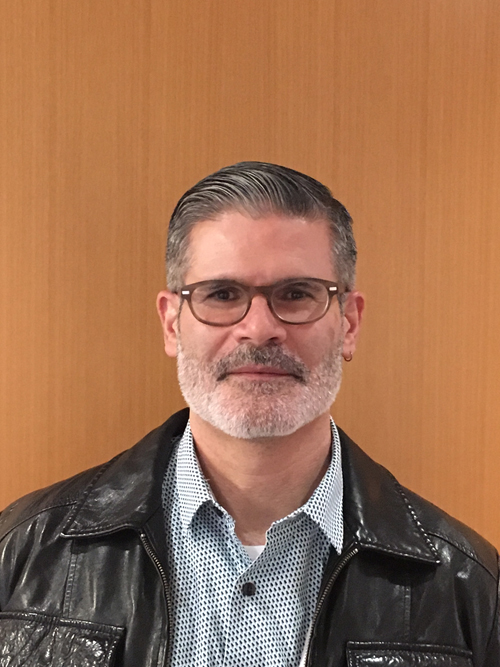
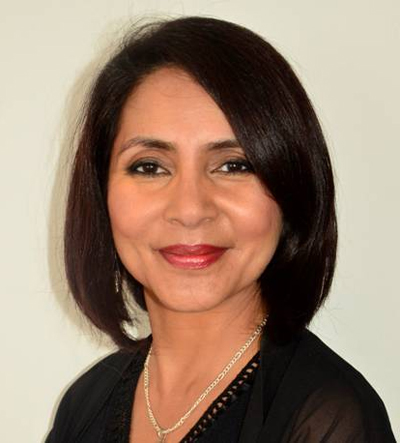
CAA welcomes new members to the Board of Directors, Roberto Tejada of the University of Houston and Dina Bangdel of Virginia Commonwealth University in Qatar, who have filled vacant positions left by two resigning directors. The board also selected two directors to serve one-year officer terms: Tejada is secretary and N. Elizabeth Schlatter is vice president for Annual Conference. Four other new board members were elected in February 2016.
CAA Salutes Fifty-Year Members
posted by Christopher Howard — April 18, 2016
CAA warmly thanks the many contributions of the following dedicated members who joined the organization in 1966 or earlier. This year, the annually published list welcomes fourteen artists, scholars, and educators—and one attorney—whose distinguished exhibitions, publications, teaching practices, and professional service have shaped the direction and history of art over the last fifty years.
1966: Madeline H. Caviness; Gilbert S. Edelson; Jonathan Fineberg; Ann Sutherland Harris; Sara Lynn Henry; Cecelia F. Klein; Henry F. Klein; Anne-Marie Logan; Peter V. Moak; Anne Morganstern; James Morganstern; Peter H. Schabacker; David M. Sokol; and Marcia H. Werner.
1965: Jean M. Borgatti; Norma Broude; Wanda M. Corn; Elaine K. Gazda; Diana Gisolfi; Dorothy F. Glass; Andree M. Hayum; Ellen V. Kosmer; Lillian D. MacBrayne; Jerry D. Meyer; Ann Lee Morgan; Myra N. Rosenfeld-Little; Ted E. Stebbins; Eugenia Summer; MaryJo Viola; Michele Vishny; and Wallace E. Weston.
1964: Richard J. Betts; Ruth Bowman; Vivian P. Cameron; Kathleen R. Cohen; Paula Gerson; Ronald W. Johnson; Jim M. Jordan; William M. Kloss; Rose-Carol Washton Long; Phyllis Anina Moriarty; Annie Shaver-Crandell; Judith B. Sobre; and Alan Wallach.
1963: Lilian Armstrong; Richard Brilliant; Eric G. Carlson; Vivian L. Ebersman; Françoise Forster-Hahn; Walter S. Gibson; Caroline M. Houser; Susan J. Koslow; E. Solomon; Lauren Soth; Richard E. Spear; Roxanna A. Sway; Athena Tacha; and Roger A. Welchans.
1962: Jo Anne Bernstein; Phyllis Braff; Jacquelyn C. Clinton; Shirley S. Crosman; Frances D. Fergusson; Gloria K. Fiero; Jaroslav Folda; Harlan H. Holladay; Seymour Howard; Alfonz Lengyel; David Merrill; John T. Paoletti; Aimee Brown Price; Lillian M. Randall; Nancy P. Sevcenko; Thomas L. Sloan; Elisabeth Stevens; Anne Betty J. Weinshenker; and William D. Wixom.
1961: Matthew Baigell; Margaret Diane David; Bowdoin Davis Jr.; David Farmer; J. D. Forbes; Isabelle Hyman; Clifton C. Olds; Marion E. Roberts; and Conrad H. Ross.
1960: Shirley N. Blum; Kathleen Weil-Garris Brandt; Dan F. Howard; Eugene Kleinbauer; Edward W. Navone; Linda Nochlin; and J. J. Pollitt.
1959: Geraldine Fowle; Carol H. Krinsky; James F. O’Gorman; and Ann K. Warren.
1958: Samuel Y. Edgerton Jr.; Carla Lord; Damie Stillman; Clare Vincent; and Barbara Ehrlich White.
1957: Bruce Glaser; Marcel M. Franciscono; Jane Campbell Hutchison; Susan R. McKillop; and Frances P. Taft.
1956: Svetlana L. Alpers; Norman W. Canedy; David C. Driskell; John Goelet; Joel Isaacson; John M. Schnorrenberg; and Jack J. Spector.
1955: Lola B. Gellman; Irving Lavin; and Suzanne Lewis.
1954: Franklin Hamilton Hazlehurst; Thomas J. McCormick; Jules D. Prown; Irving Sandler; Lucy Freeman Sandler; and Harold Edwin Spencer.
1953: Dorathea K. Beard; Margaret McCormick; and Jack Wasserman.
1951: Wen C. Fong.
1950: Alan M. Fern.
1949: Dario A. Covi and Ann-Sofi Lindsten.
1948: William S. Dale.
1947: Dericksen M. Brinkerhoff; David G. Carter; Ellen P. Conant; and Ilene H. Forsyth.
1945: James S. Ackerman.
Suzanne Preston Blier Is the New CAA President
posted by Christopher Howard — April 04, 2016
Suzanne Preston Blier, a historian of African art and architecture at Harvard University, has been elected president of CAA for a two-year term, beginning in May 2016. A member of the board since 2012, Blier has served as vice president for publications (2013–15) and vice president of Annual Conference (2015–16), and has served on task forces related to the development of CAA’s Code of Best Practices in Fair Use for the Visual Arts and Guidelines for the Evaluation of Digital Scholarship in Art and Art History. She will succeed DeWitt Godfrey, professor of art and art history at Colgate University.
In her statement for candidacy, Blier wrote, “My priorities as president will focus on increasing membership in part through changes to the Annual Conference and enhancing CAA’s place in the community of discourse nationally and internationally through more effective social media engagement and the use of digital technologies. I hope also to broaden our engagement not only at the local and national levels but also internationally.”
Blier earned a BA from the University of Vermont in 1973 and completed a PhD in art history from Columbia University. Blier taught at Northwestern University for two years (1981–83) and returned to Columbia (1983–93) before landing at Harvard, where she is currently Allen Whitehill Clowes Professor of Fine Arts and Professor of African and African American Studies.
In 2008, Blier helped found an on-line GIS-enhanced database and mapping project supported by the Center for Geographic Analysis at her school that in 2011 was relaunched as Worldmap.
Blier’s involvement in CAA spans several decades. She originally served on the board from 1989 to 1994. She was a member of the Art Bulletin Editorial Board from 2003 to 2007, serving one year as chair, and participated on the juries for CAA’s Distinguished Lifetime Achievement Award for Writing on Art (2004–6) and Charles Rufus Morey Book Award (2009–11). Blier also helped to shape CAA’s Strategic Plan 2015–2020 and, in her role as vice president, chaired both the Annual Conference Committee and the 2016 task force that brought significant changes to the Annual Conference organization and structure.
“In my own academic work,” Blier continued in her statement, “I have come to understand firsthand the importance of engaging broad and diverse communities of participants; my work initiating an open source website focused on an array of mapping projects, has offered me opportunities to see the imprint that new technologies can have in the lives of both faculty and students.”
 Blier’s most recent book is Art and Risk in Ancient Yoruba: Ife History, Power, and Identity, c. 1300 (New York: Cambridge University Press, 2015), which won the 2016 PROSE Award for Art History and Criticism. She also wrote several other books of note: African Royal Art: The Majesty of Form (London: Calmann and King, 1998); African Vodun: Art, Psychology, and Power (Chicago: University of Chicago Press, 1995), which received CAA’s Morey Book Award in 1997; and The Anatomy of Architecture: Ontology and Metaphor in Batammaliba Architectural Expression (Cambridge, MA: Harvard University Press, 1987), which won the inaugural Arnold Rubin Outstanding Publication Award from the Arts Council of the African Studies Association. The production of both African Vodun and The Anatomy of Architecture were supported by grants from CAA’s Millard Meiss Publication Fund. Blier’s books have been translated into Spanish, Italian, Chinese, and Korean. A publication edited with David Bindman, called The Image of the Black in African and Asian Art, is forthcoming from Harvard University Press.
Blier’s most recent book is Art and Risk in Ancient Yoruba: Ife History, Power, and Identity, c. 1300 (New York: Cambridge University Press, 2015), which won the 2016 PROSE Award for Art History and Criticism. She also wrote several other books of note: African Royal Art: The Majesty of Form (London: Calmann and King, 1998); African Vodun: Art, Psychology, and Power (Chicago: University of Chicago Press, 1995), which received CAA’s Morey Book Award in 1997; and The Anatomy of Architecture: Ontology and Metaphor in Batammaliba Architectural Expression (Cambridge, MA: Harvard University Press, 1987), which won the inaugural Arnold Rubin Outstanding Publication Award from the Arts Council of the African Studies Association. The production of both African Vodun and The Anatomy of Architecture were supported by grants from CAA’s Millard Meiss Publication Fund. Blier’s books have been translated into Spanish, Italian, Chinese, and Korean. A publication edited with David Bindman, called The Image of the Black in African and Asian Art, is forthcoming from Harvard University Press.
Her scholarship has appeared in numerous magazines and journals, including African Arts, Journal of African History, American Journal of Semiotics, Anthropology and Art, and Journal of the Society of Architectural Historians. A short essay “Art, Mimesis, and Tigritude” can be found in the June 2013 issue of The Art Bulletin as part of the series Notes from the Field: Mimesis. Other essays in CAA’s flagship journal are “Kings, Crowns, and Rights of Succession: Obalufon Arts at Ife and Other Yoruba Centers” (September 1985) and “Imaging Otherness in Ivory: African Portrayals of the Portuguese ca. 1492” (September 1993). Both articles were selected by members of the Art Bulletin Editorial Board for the Centennial Anthology of the Art Bulletin’s “greatest hits,” designating important articles and reviews since the journal’s 1913 founding to mark CAA¹s Centennial in 2011.


